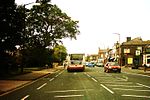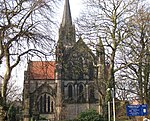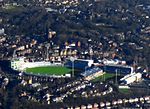Cottage Road Cinema

Cottage Road Cinema is the oldest remaining cinema in continuous use in Leeds, West Yorkshire, England. Situated in the suburb of Headingley, Cottage Road was originally built in 1905 as a garage for the nearby Castle Grove mansion. Local newsreel cameraman Owen Brooks leased the garage with his friend George Reginald 'Reg' Smith and the two converted the building into a cinema, which opened as 'Headingley Picture House' on Monday, 29 July 1912. The cinema changed hands in the late 1930s, ultimately being purchased by Associated Tower Cinemas, who changed its name to Cottage Road Cinema and undertook building work. Associated Tower invested £20,000 to modernise the cinema in 1972, but announced that Cottage Road would close on 28 July 2005, due to unsustainable financial losses. The cinema was saved by a last minute bid from Charles Morris's Northern Morris Group. Under Northern Morris's ownership, Cottage Road celebrated its 100th birthday on 29 July 2012, with a Leeds Civic Trust blue plaque being unveiled by screenwriter Kay Mellor. Aiming to provide "cinema-going as it used to be", Cottage Road shows a mix of family-friendly films alongside classic movies, with ice creams being sold in the auditorium during the interval before films begin, and the national anthem being played at the end of each evening.
Excerpt from the Wikipedia article Cottage Road Cinema (License: CC BY-SA 3.0, Authors, Images).Cottage Road Cinema
Cottage Road, Leeds Far Headingley
Geographical coordinates (GPS) Address Nearby Places Show on map
Geographical coordinates (GPS)
| Latitude | Longitude |
|---|---|
| N 53.826944 ° | E -1.581389 ° |
Address
Cottage Road 9
LS6 4DD Leeds, Far Headingley
England, United Kingdom
Open on Google Maps











